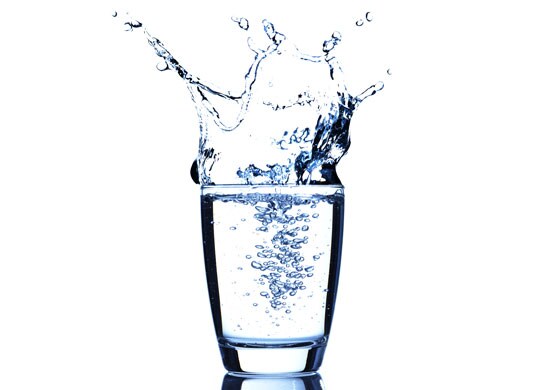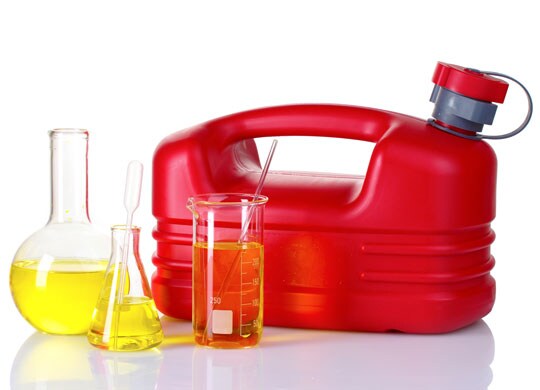Search Thermo Fisher Scientific
ICP-OES Sample Preparation
A variety of sample types can be analyzed by inductively coupled plasma optical emission spectroscopy (ICP-OES), including aqueous and organic liquid and solid samples. These have to be brought into a state that the ICP and the instrument as a whole can process for elemental analysis. The most typical sample form is a liquid. A liquid sample is introduced using a peristaltic pump to ensure constant flow. Commonly, a high-speed flow of gas (usually argon) is used to shatter small droplets of liquid into an aerosol. This aerosol is then introduced into a spray chamber which removes the larger droplets. Only the fine aerosol is allowed to enter the plasma. Solid samples are typically ablated into small particles either using a laser or spark ablation system and then transported directly to the plasma.
Samples analyzed by ICP-OES cover many application areas, including those in the environmental, metallurgical, geological, petrochemical, pharmaceutical, materials, food safety, and other fields.
Aqueous samples

Aqueous samples can be introduced into a plasma directly, and often without dilution. They are typically acidified with nitric acid (HNO3) to ensure that their elemental components remain in solution. A standard sample introduction system usually consists of a concentric nebulizer and a cyclonic spray chamber. With regards to particles in solution, a standard nebulizer can handle particle sizes of up to one third of the capillary diameter.
Dissolved solids
When the amount of dissolved solids in a sample (e.g., in waste or sea water, metallurgical digests) rises above a certain level (>3%), either the sample needs to be diluted or specific sample introduction components, which have a high solids tolerance need to be used for analysis. A typical high-solids sample introduction system is comprised of a parallel path nebulizer and wide bore torch center tube to prevent blockage due to crystallization of salts. A baffled spray chamber is also used to reduce the matrix load (the amount of sample transported to the plasma) on the plasma. When analyzing samples with even higher percentages of dissolved solids (>15%), a sheath gas must be used to prevent complete plugging of the center tube. It is also good practice to use a ceramic rather than a quartz torch, because quartz has a tendency to undergo devitrification, leading to faster wear of the ICP torch.
Hydride formation
Increasing sensitivity for toxic elements
One challenge with ICP-OES sample preparation is the analysis of samples containing toxic elements such as arsenic, mercury, antinomy and selenium. These samples are common in environmental, biological, and food samples; furthermore, regulations require lower limits of detection for toxic elements year after year to ensure that their contamination levels are maintained at an absolute minimum.
The analytical performance required for these elements is often difficult to achieve using a standard sample introduction setup (nebulizer, spray chamber, etc.) because the analytes have spectral interferences and poor sensitivity.

There are several reasons for these issues. Major emission lines for such analytes often lie in complex regions of the spectrum and feature poor sensitivity due to the high excitation energies of the elements. Also, several primary wavelengths for these elements are in the UV end of the spectrum, and, therefore, undergo a higher degree of transmission loss due to absorption.
Analysis of samples containing toxic elements can be enhanced by the use of a hydride generation sample introduction system. This is due to the chemical properties of these elements, which enable the formation of volatile gaseous hydrides when reacted with reducing agents such as sodium borohydride. These gaseous hydrides can be separated from the liquid sample and introduced into the plasma. The removal of solvent concentrates the analyte, reduces plasma loading, and removes interfering species, which in turn reduces the background signal and increases sensitivity.
Solid sample digestion
Because solid samples cannot be introduced into the plasma directly, they must be either transferred into the plasma using an accessory technique (e.g., electrothermal vaporization, laser ablation), or they must be made into a solution. The main techniques used to dissolve solids are acid digestion and fusion.
While using fusion for sample preparation leads to complete sample dissolution, it also results in high solid content, which increases the risk of contamination from flux agents. As a result, sample dilution is needed and this reduces the detection limit.
Acid digestion usually involves the dissolution of a sample in a hot acid, or a mixture of hot acids. Heating acids is performed on a hot plate, or by using a microwave digestion system that employs pressurized vessels to produce even higher reaction temperatures.

Acid digestion of soils and sludges is one example of solid sample preparation for ICP-OES. The analysis of soils, sediments, and other soil-like solid materials is needed in order to monitor the land used for crop growth. Nutrient levels and the presence of toxic elements are monitored so that groundwater sources are protected from contamination, and decisions can be made regarding future land use and contamination site cleanup.
The digestion or extraction of soil samples is performed with aqua regia, which is a solution composed of nitric and hydrochloric acid at a 1:3 ratio. This solution is capable of releasing most elements from the soil.
Special digestions
If the soil (or other sample types like plant material) contains high concentrations of silicon dioxide, then hydrofluoric acid (HF) is added to the digestion protocol. HF is not only highly corrosive and toxic: it also dissolves glassware used in the process of sample preparation and introduction into the ICP-OES. In such cases, a special sample introduction system, which is inert to HF, must be used.
For samples that contain high amounts of organic material, (e.g., food), hydrogen peroxide is added during digestion because it accelerates the dissolution process by raising the sample core temperature. For the digestion of plastic material, a strong oxidizing agent such as sulfuric acid is applied; however, many resulting sulfates are insoluble.
For more information
Organic samples
The analysis of organic samples is typically not a straightforward process. Because of the physical properties of these samples, plasma stability can be adversely affected. Parameters that influence the plasma's overall performance include the volatility and viscosity of the organic sample. To overcome such obstacles, a special sample introduction system is used, which employs a baffled spray chamber and a less efficient nebulizer (e.g., V-groove nebulizer). A small bore torch center tube is used to reduce the load on the plasma. Typical organic ICP-OES applications include the analysis of oils and greases for wear metals and additives, the composition of petrochemicals at refineries, and purity determination of paints and inks.
Sample and standard preparation
Due to its challenging physical properties, organic sample preparation is not as simple as that of aqueous sample preparation. As a result, sample dilutions are always carried out by weight. For calibration, oil-based stock standards are used. Prior to dilution in a suitable solvent, the organic sample is homogenized by sonication. The solvent is then spiked with an internal standard. To ensure that differences in viscosity are minimized, the final solutions of samples and standards contain the same percentage of oil.

Carbon emission in the plasma
A plasma that contains an organic solvent will appear green due to the emission of carbon and carbon species (C, C2, CN). The edges of the plasma are also more clearly defined when compared to those of aqueous plasmas. This green light may interfere with signals emanating from other analytes, and especially alkali elements that emit light in the visible region (400–800 nm).
To reduce the carbon emissions, compressed air can be added to the argon gas of the plasma, helping to convert carbon species into oxides such as carbon monoxide and carbon dioxide. Unfortunately, adding compressed air to the plasma gas also means introducing a strong carbon oxide spectrum and disrupting the trace analysis of wavelengths below 240 nm. Therefore, it is not a universal solution for avoiding interferences from organic matrices.
Viscous and volatile samples
Using a temperature-controlled spray chamber
Volatile samples have the tendency to develop a very dense aerosol when nebulized. This dense aerosol poses a threat to plasma stability and can even extinguish a plasma. To introduce a very volatile sample (e.g., gasoline) into the plasma, certain countermeasures must be applied. One option is to dilute the sample with a less volatile solvent. However, this also reduces the detection capacity of the method. Another solution is to cool down the sample with the help of a cooled spray chamber, thus reducing volatility. In so doing, less sample is transported into the plasma. Also, the application of a low flow nebulizer can reduce the load of aerosol reaching the plasma, increasing plasma stability.
Highly viscous samples (e.g., plant oils, lubricating oils) must be diluted prior to analysis; alternately, they may be heated before and during sample introduction to reduce their viscosity. Heating of the sample introduction components can take place in the same unit that is used for cooling of volatile samples. Dilution of viscous organic samples is typically performed using an organic solvent (e.g., xylene, kerosene, white spirit) with a dilution factor of 1:10. Because the solvent increases the volatility of the sample, the specific sample introduction components mentioned above need to be used.
For more information
Spectroscopy Elemental & Isotope Analysis Resource Library
Learn how elements and their isotopes provide information about sample origin and identity in our library of applications notes, scientific posters, webinars, and more.
